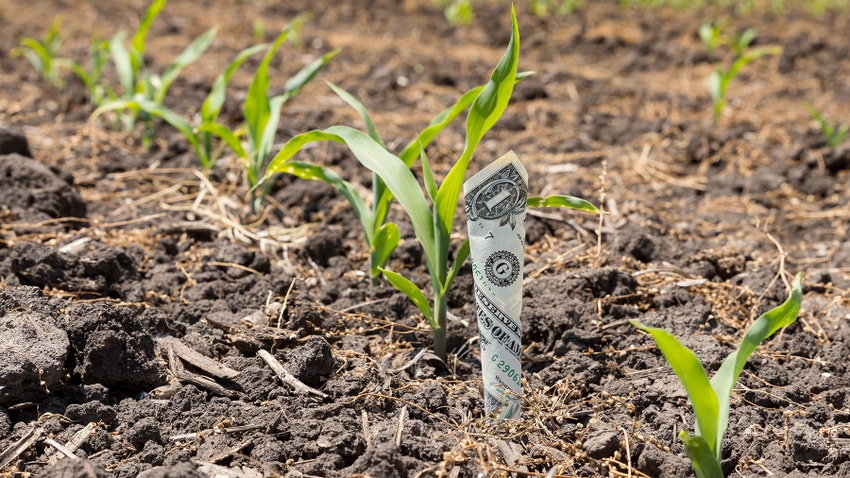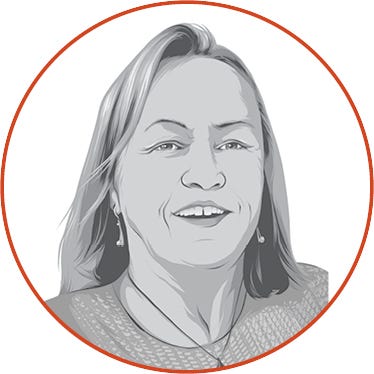
In a world of uncertainty, farm management consultant Steve Johnson urges farmers to take advantage of all that is certain: crop insurance.
“Crop insurance stands alone,” said Johnson, a semi-retired farm management specialist at Iowa State University Extension. “It’s funded outside the farm bill.”
That distinction is important, Johnson told attendees at the 2024 Farm Futures Business Summit, where he spoke to the owners of agribusinesses who will soon roll out tractors into a new crop season with all of the policy uncertainty to be expected in the current political climate and a five-year-old farm bill.

Farm management consultant Steve Johnson urged attendees at January’s Farm Futures Business Summit to consider crop insurance an essential element of their preharvest marketing program. Credit: Pam Caraway
“The big safety net — the big kahuna in this canyon — is crop insurance,” Johnson said. “It’s been there for 24 years, and it’s a bigger safety net than it’s ever been because you’re using a revenue-based product — yield times price.”
Ineffective reference prices
Effective reference prices are, well, less effective. Yes, Johnson noted, higher effective reference prices are in place for corn and soybeans in Price Loss Coverage or one of the Agriculture Risk Coverage programs.
“For the first time in 10 years, the effective reference price will change,” Johnson noted.
Corn moved to $4.01, up from the statutory reference price of $3.70. Soybeans moved up to $9.26, an increase of 86 cents. The wheat reference price didn’t change.
However, Johnson noted, those prices likely won’t impact farm earnings.
“Prices went higher, but I don’t think we’re going to trigger PLC payments. We have not triggered a PLC payment on those three crops since 2016,” he said. “PLC is kind of a loser program. And, in my belief, we’re probably not going to take the national average price for corn below $4.01, or beans below $9.26, or oats below $2.45.”
Johnson said that the ARC/PLC program is at the mercy of Congress because those programs are funded through the farm bill. To recap, he said: “If you remember, we got that farm bill in 2014, and it got tweaked a little bit in 2018, and it doesn’t pay.”
The only effective use of PLC, as Johnson sees it, is for farmers who buy the Supplemental Coverage Option, increasing their crop insurance coverage. To qualify for that crop insurance buy-up option, a farmer must also be in the PLC program.
“If you really think about it, and if ARC/PLC went away, most of you are fine. Most of you,” he said.
Tie down farm safety net
And that’s why Johnson calls crop insurance the big safety net. It’s a risk management tool essential to a preharvest marketing plan. And it’s funded — regardless of when the next farm bill is passed or what is included in it.
“We need to leverage those crop insurance products because they’re a cost-share program,” he said.
Of those crop insurance programs, Johnson said Revenue Protection is the foundational policy because it pays upon loss. He calls shallow-loss products — SCO, Margin Protection or the Enhanced Coverage Option — “add-ons.” Though he’s a proponent of shallow-loss products in many situations, Johnson warns farmers against solely relying on them because payments from a loss under one of those products isn’t issued until after the county yield is determined the following June, or about eight months after harvest.
“Don’t ever buy Margin Protection and say, ‘That’s all I need,’” Johnson said. “Your lender is not going to be humored when you have a loss and you don’t collect a check in December or January because you’re waiting until June to collect a check.”
In addition to deciding which federal crop insurance product to buy at which levels, Johnson recommends buying supplemental products: hail, wind and green snap.
“There is a reason that I really think you want to emphasize hail, wind and green snap. Not necessarily because I’m predicting those,” Johnson said. His reasoning depends on a farm’s unit coverage. Generally, options for unit coverage are basic, optional or enterprise. Johnson said those who buy enterprise units should be considering hail, wind and green snap.
“When you’re in basic units, it’s by ownership of the land. When you’re in optional units, you are in the section. But when you move to enterprise units, you are insuring at the county line,” Johnson said. “And hail discriminates. It always takes your best field.”
One last tip
Finally, Johnson said, pay the higher premium that comes with a harvest price guarantee.
“Check that box,” he said. “That’s not the place to cut cost.”
About the Author(s)
You May Also Like






